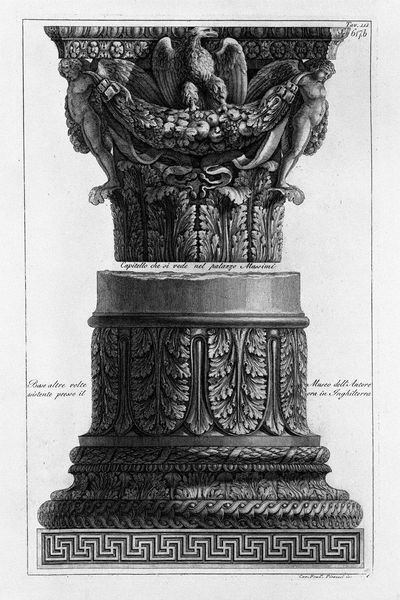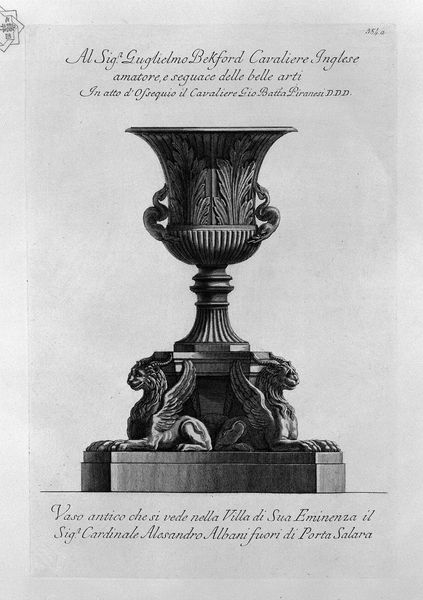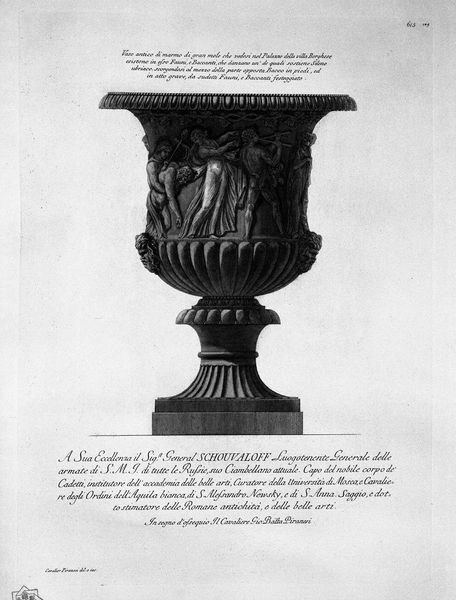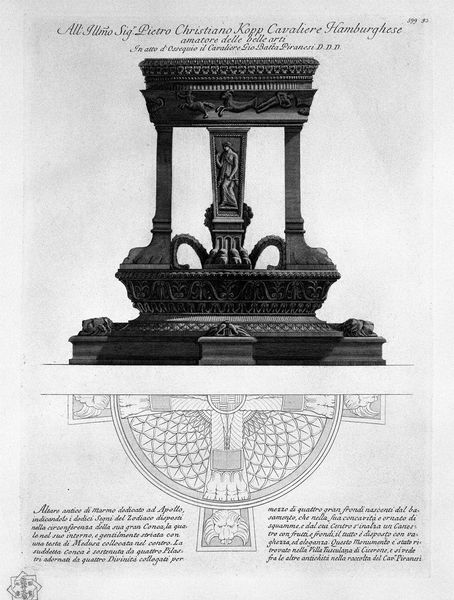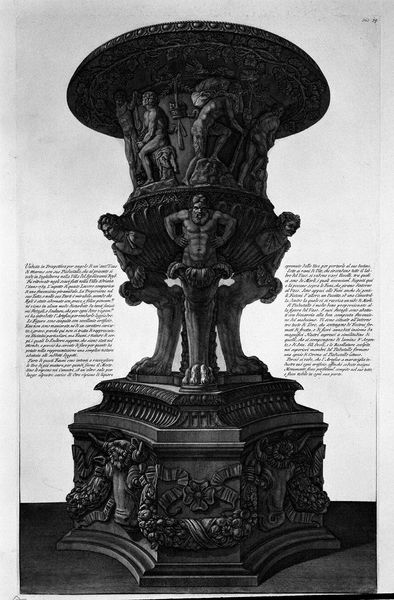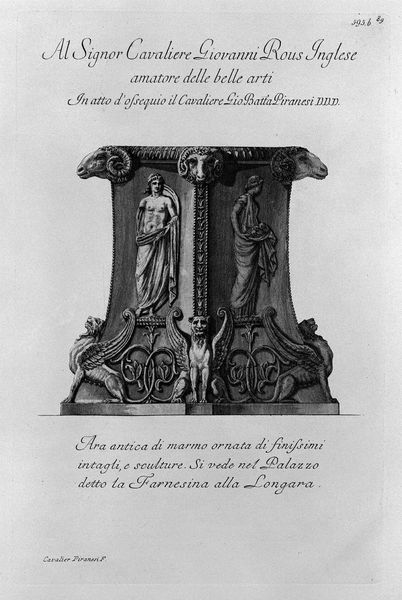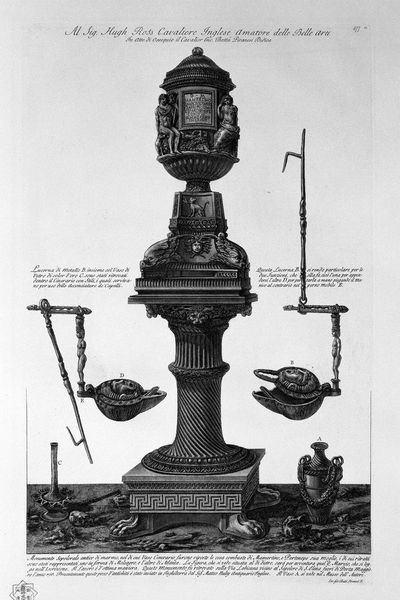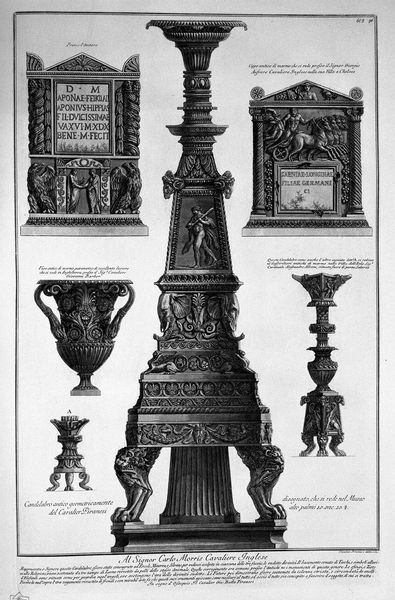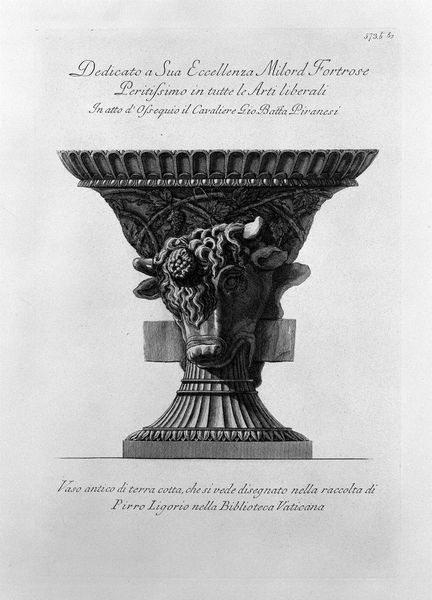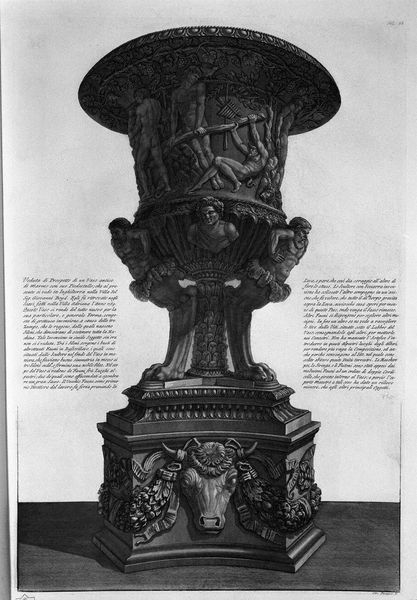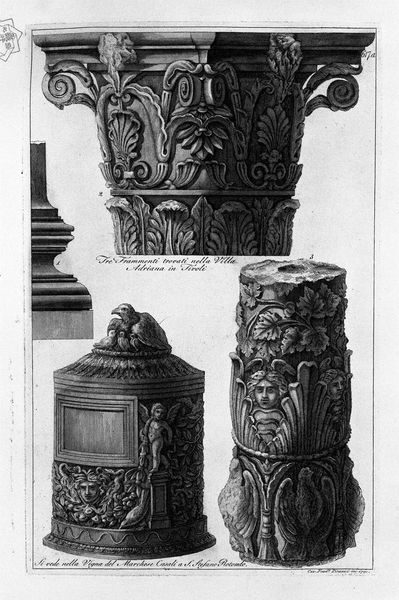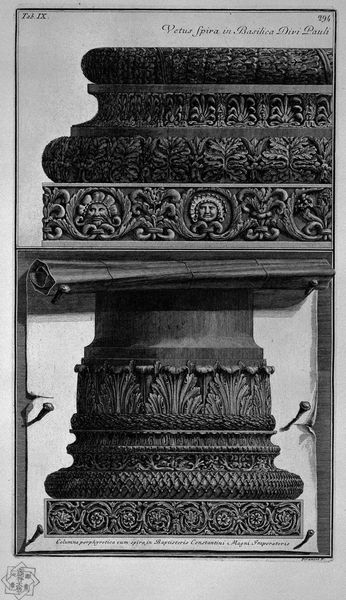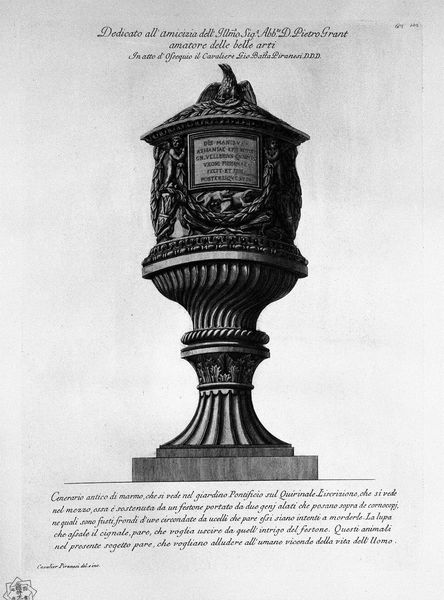
print, etching, engraving, architecture
#
neoclacissism
# print
#
etching
#
old engraving style
#
charcoal drawing
#
form
#
pencil drawing
#
column
#
history-painting
#
engraving
#
architecture
Copyright: Public domain
Editor: Here we have Giovanni Battista Piranesi’s etching from 1778, "Another view in perspective of the same Tripod." It's fascinating how detailed the engraving is, but it also feels slightly unsettling, like a relic from a forgotten world. What do you see in this piece? Curator: I see a powerful assertion of power and authority through the language of Neoclassicism. The tripod, elevated and meticulously rendered, is not merely an object, but a symbol loaded with socio-political implications. Think about who was commissioning and consuming such images. Who had access to the idealized visions of the past, and what did that mean for those who were excluded? Editor: That's interesting. So, it’s not just about admiring classical forms, but also about the power dynamics at play? Curator: Precisely. The piece reflects a fascination with antiquity, yet this fascination was often interwoven with colonial ambitions and a desire to legitimize certain social hierarchies. Consider the appropriation of classical aesthetics in the service of empire. Does understanding that context change your perception of the print? Editor: Definitely. I was initially focused on the beauty of the lines, but now I see it as part of a bigger, more complicated picture. It makes me think about who decides what "beauty" even means in the first place. Curator: Exactly! And whose stories get told through art, and whose are erased. Editor: This makes me rethink what I thought I knew about Neoclassicism. Thanks for making me think about it through the lens of social power. Curator: My pleasure. Keep questioning! That is what is important.
Comments
No comments
Be the first to comment and join the conversation on the ultimate creative platform.
